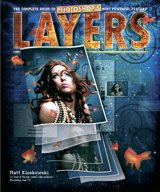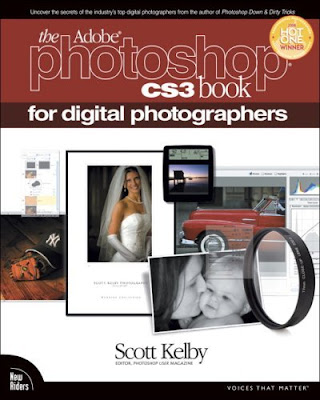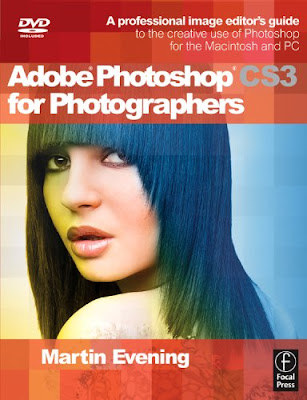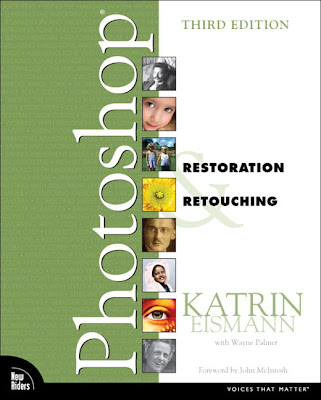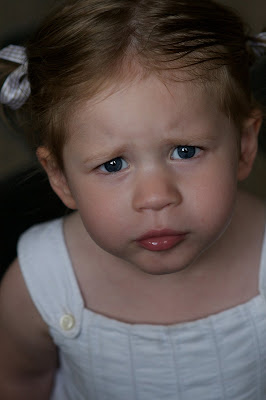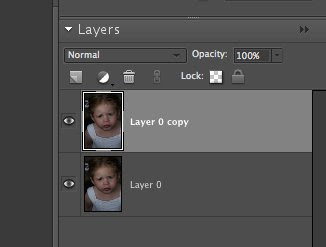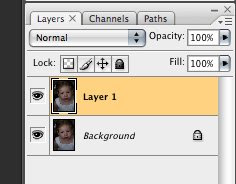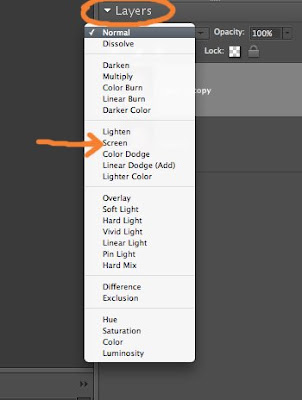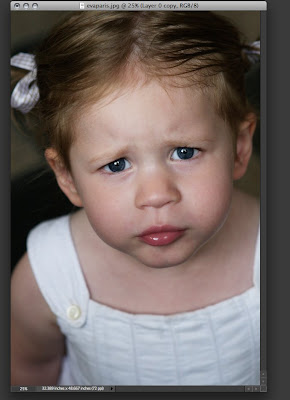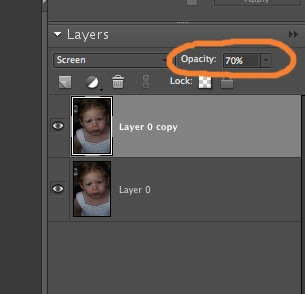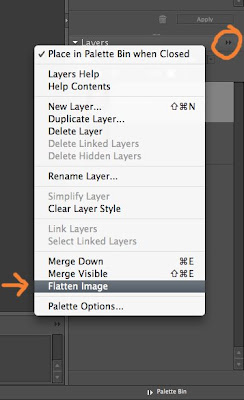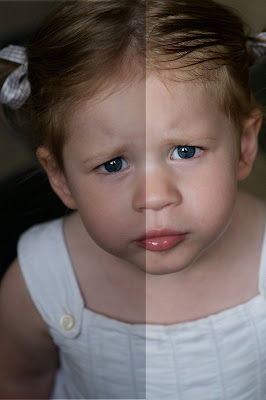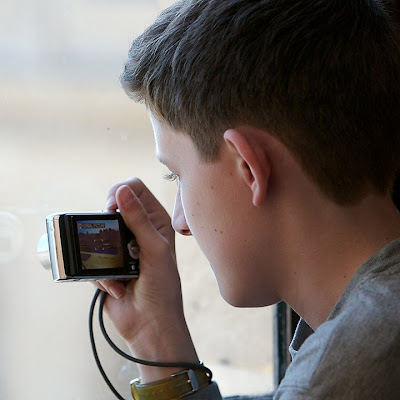Since we are focusing on the theme "photo within a photo" this month, you can imagine how thrilled I was that
Lorrie McClanahan accepted to share some of her work with us.
Lorrie is both a painter and a photographer living in Texas and currently
working on her MFA in Painting at Texas Christian University. For more than 17 years she has painted murals and portraits in the Dallas/Fort Worth area, but more recently has focused on contemporary works that often combine photography and painting. I discovered Lorrie's
"photo within a photo" set on flickr and was struck by the creativity and wit of her work. Through email, I was able to conduct the following brief interview:
What is the relationship between painting and photography in your work?Wow, right off the bat you landed on something that’s has been a focus of mine for 30 years. Even as a painting student in the late 70s I was into photography and used it not just as a reference tool but to explore such questions as “what is real?” Back then, the idea of challenging photography’s veracity—its role as a mirror for reality—was still fairly new. There wasn’t a lot of manipulation, and what creative liberties were taken had to be done by hand. At that time I was projecting slides onto curved white objects and re-photographing them. Then I would print the results and draw or paint over those. Finally, I would make a ‘clean’ photographic copy. There was a lot of back and forth dialogue between painting and photography. Sometimes my paintings would turn out looking more “real” than my photos.
Also, I’ve carried a camera around my entire adult life. Over time, using it as an information gathering tool has strongly influenced my sense of composition. Cropped subjects, even in paintings, look natural to me. On the other hand, seeing photography as a plastic medium—one that is available for manipulation—surely comes from my background as a painter.
It seems that both your paintings and your photos play with layers to convey meaning. Could you tell me more about that?As you may have guessed, I’m interested in process. I like to show or at least hint at the steps that were involved in making a piece. A still image has the unique feature of being able to be experienced all at once, as opposed to, say, film or music which need time to unfold. Layers are one way to embed the piece with time. One gets a sense of what came before even if it only takes a flash to experience the piece as a whole. Since many of my works use people as the subject, this highlights the forces that affect us...the residue of events and feelings that make up a lifetime.
And of course, process through layers is compatible with the practice of making art, of creation itself.
What was the inspiration behind your "photo within a photo" set on flickr?As I said, the idea of photographing photos goes back a long time for me. But I got back into it in the summer of ‘05. I was trimming photos and discarding proof prints, and there was a pile of scraps on the floor at my feet. The morning light streaming in through the window threw some interesting shadows on them which caught my eye, so naturally I grabbed my camera. Ha. It really was that simple. The first one was all about the light. But there also happened to be a man peering out from the pile of scraps, and I liked his expression and the architectural effect of the paper. The subject matter prompted me to try some more.
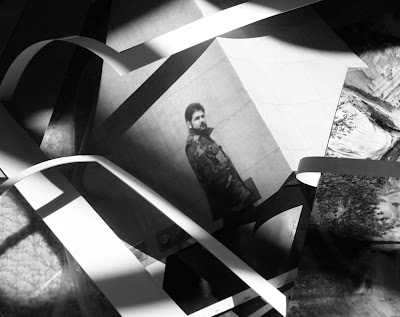
Since working on the series I’ve stumbled across other photographers who’ve done similar things. My knowledge of prominent photographers is pretty sketchy. I know a lot more about the history of painting. But in looking into it, I found I certainly wasn’t the first to play with the concept of a photo in a photo or meta-photography in general. And tapping into the internet has revealed an entire community of like-minded photographers.
Could you comment on a few of your favorites from the set?
I’ve included the photo I mentioned above, as it was the inspiration for subsequent experiments. Not long afterwards I photographed a flower under similar morning light conditions. I took the print and put it in a glass of water. This became “Substitute.” Again, it plays with the notion of what’s real. There’s no attempt at illusion, and the setup is laughable. Mixed in there are thoughts about props and Hollywood-like smoke and mirrors. We’ve become quite acquainted, and maybe too comfortable, with the word “faux.”
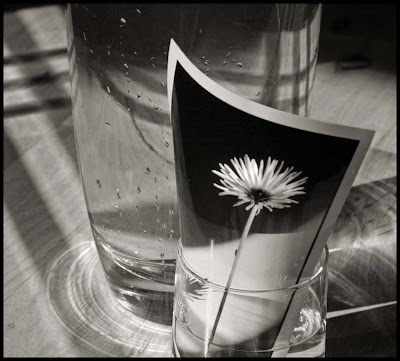
Another of my favorites is “To Know You.” The initial photo was taken in the airport. My husband and I had just arrived in England, and while he dealt with some travel arrangements I struck up a conversation with a young Spanish man sitting next to me. We spent a couple of minutes talking and I asked if I could take his picture, which he agreed to. What struck me was the unselfconscious, pensive pose he took. I never do that when a camera is pointed at me; it makes me very uncomfortable...which of course is a completely different photography subject to cover. But anyway, once I got home and printed out his portrait I got to thinking about the notion of the stranger, and how much or how little we can know about a person. And is it possible to know much at all from a photo? I re-photographed him in several settings, even wrote a little poem. It comes across almost romantic, but I was thinking more along the lines of cultural differences.
 Do you have any advice for some of my readers who may be trying to explore the "photo within a photo" theme? Any good sources of inspiration?
Do you have any advice for some of my readers who may be trying to explore the "photo within a photo" theme? Any good sources of inspiration?
A year or two after photographing the stranger in the airport, I came across a group on flickr called “
Your Picture Travels Around the Globe.” Talk about inspiration! Group members make a photo of themselves available, which other members print and take to various settings to re-photograph. So a Chinese man does various things in Texas, and an American woman winds up on the streets of The Netherlands or South Africa. Some of the illusions and visual puns are quite clever without using any Photoshop. I think the group is still active.
As far as advice, I would say a good way to start is by thinking in terms of the still life. Choose an object, print it out, and try inserting it into various groups of objects. This gets the brain thinking about shape, color and composition. Play with different types of paper. A gloss paper will photograph differently than a matte one. Try re-photographing both indoors and out. Take a small stack of photos with you (along with your camera) when you run errands. You’d be surprised what kinds of connections come up seemingly randomly. I happened to have a photo of a man’s face in a red and white target shape with me when I went shopping. As luck would have it, one of my stops was a Target store. I saw the visual connection and made a quick photo. So I got a creative experience out of my errand running. I love that kind of multi-tasking.
 Thank you so much for your willingness to share your work and thoughts.
Thank you so much for your willingness to share your work and thoughts.
You can see more of Lorrie's work on her professional site and on her flickr photo stream.










